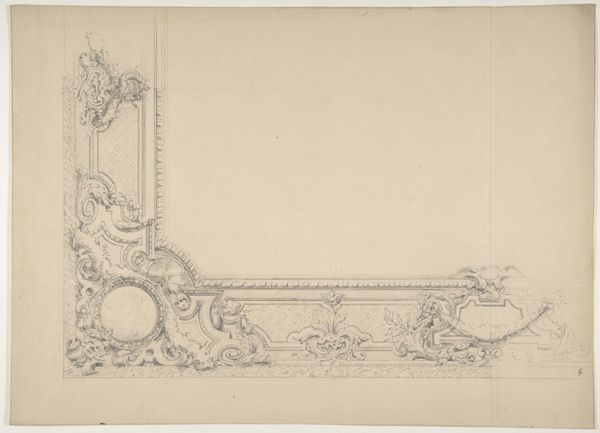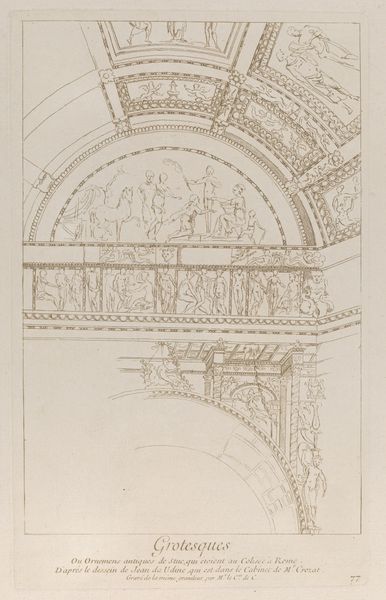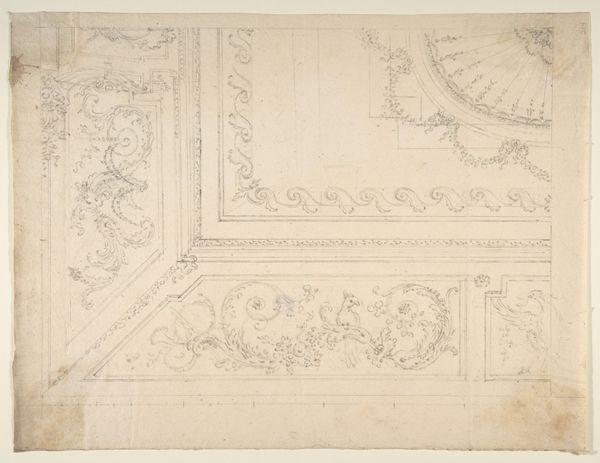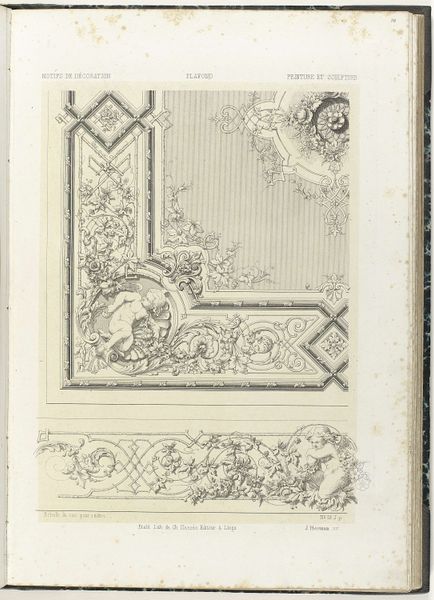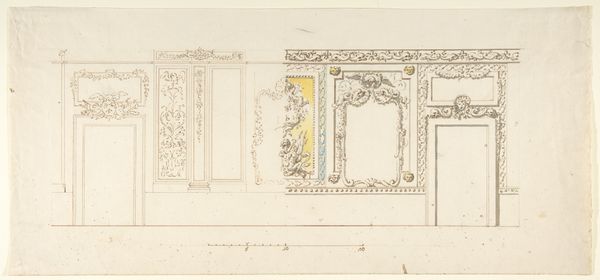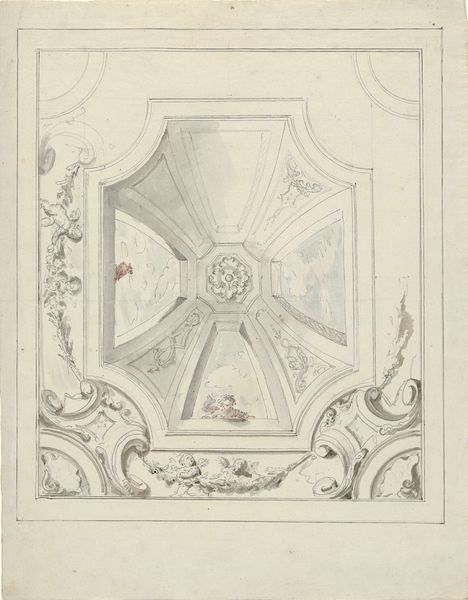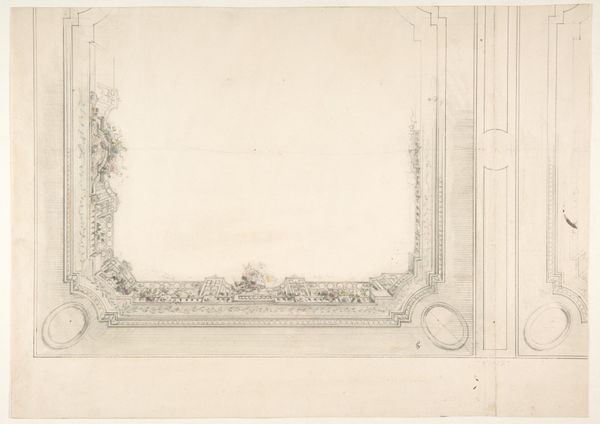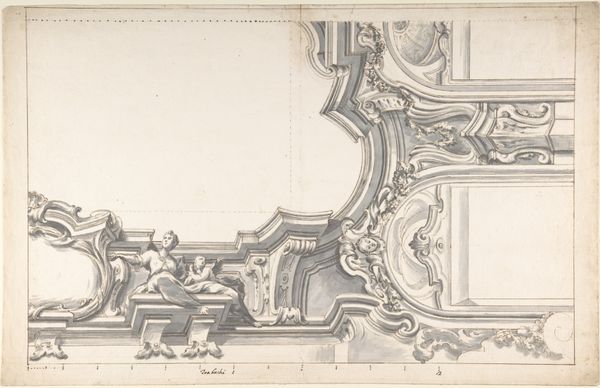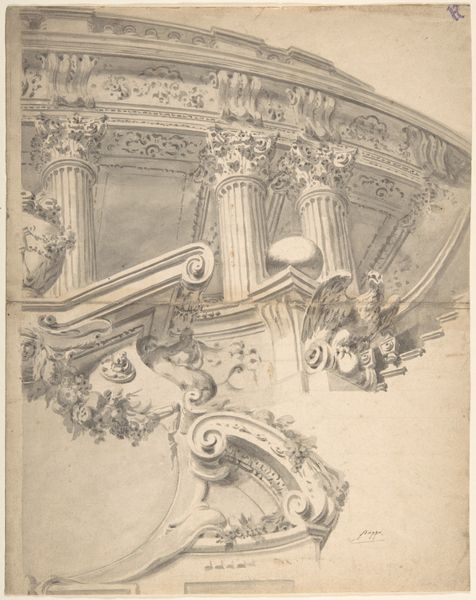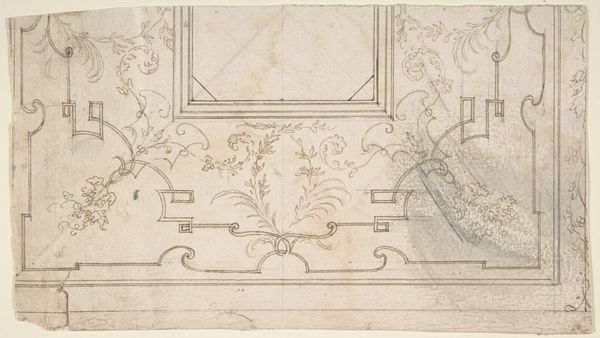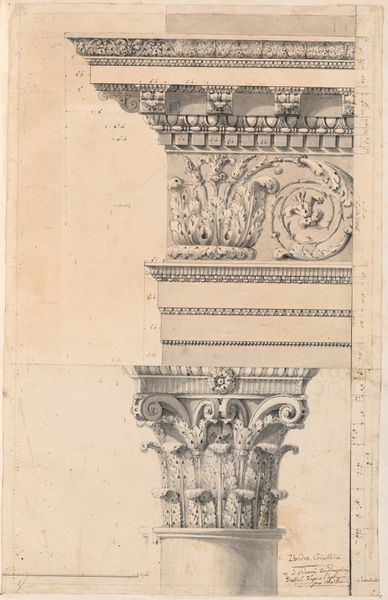
Design for Ceiling at Fontainebleau 1850 - 1900
0:00
0:00
drawing, print, etching, pencil
#
drawing
# print
#
etching
#
pencil sketch
#
etching
#
pencil
#
pen work
#
history-painting
Dimensions: 10 15/16 x 10 1/4 in. (27.8 x 26.1 cm)
Copyright: Public Domain
Curator: This delicate drawing offers us a glimpse into the artistic planning of architectural adornment. Created sometime between 1850 and 1900, it is entitled "Design for Ceiling at Fontainebleau," and has been attributed to Jules-Edmond-Charles Lachaise. Editor: You know, right off the bat, I feel like I'm looking at a ghost of grandeur. It's ethereal, unfinished, almost as if the palace itself is a memory fading at the edges. Curator: That sense of faded grandeur resonates, particularly when we consider Fontainebleau's history. The palace has been a stage for so much French history and the decorative schemes carry echoes of its many rulers, artists, and evolving aesthetic values. The use of etching and pencil here allows the design to emphasize line and form which contributes to this feeling. Editor: The cupid figure near the top is so interesting, a harbinger of love and, maybe, desire flitting amidst these calculated architectural elements. Curator: The cupid is classical motif, tying in with the Renaissance revival influences. He embodies themes of love, beauty, and idealized form. His inclusion speaks to the aspiration of elevating the space, evoking ideals associated with the French monarchy. Editor: The whole drawing feels like an attempt to capture not just a visual style, but an era, even a philosophy. Is that why so much energy goes into recalling older styles? What isn’t captured directly feels hinted at, embedded in the very details it lays out, as if longing is built right into it. Curator: Exactly, the past in these kinds of architectural environments are both inescapable and incredibly charged. To understand why certain artistic decisions were made at any period in Fontainebleau's history demands an investigation into a labyrinth of courtly values, royal taste, and France's ongoing relationship with it’s history and position within Europe. Editor: Seeing it now makes the process of creation—all the careful lines, the reworking, feel fragile, doesn't it? Like we’re almost not supposed to see it. But thank goodness, we can. Curator: Absolutely, I find it captivating how a preliminary design can reveal as much as a finished masterpiece. It becomes a looking glass into both artistic ambition, cultural identity and our endless fascination with capturing history.
Comments
No comments
Be the first to comment and join the conversation on the ultimate creative platform.

